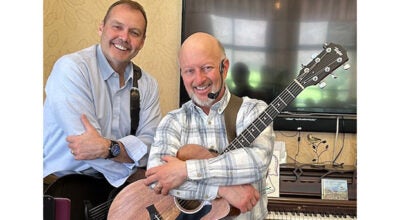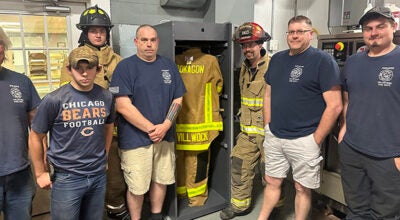Birds of prey return
Published 10:11 pm Thursday, May 17, 2012
A turkey vulture, a carnivore which gorges on pungent carrion, returned to Dowagiac Conservation Club Thursday night by request for an encore performance of Howell Nature Center’s “Birds of Prey” program.
Decaying carcasses are neutralized by vultures’ amazing digestive systems. Its red head, signifying an age of at least 3, is bald — the better to plunge into a bloody, maggot-infested body.
A four-pound migrating bird, it boasts a six-foot wing span and iridescent blue feathers viewed in sunshine.
If vultures happen to find an especially large dead animal, they cram themselves until too full to fly. If something corners them, projectile vomiting lightens the load and startles predators.
Bald eagles milk their majesty as the symbol of America, relying on their patriotic reputation to gloss over less savory aspects of their character, such as thievery. Where adaptable owls borrow nests but do not build them, stick-stacking eagles have been known to create two-ton abodes nine feet deep.
Owls eat mice, frogs and rabbits, but they and red-tailed hawks are the few birds which consume skunks.
Nancy Sloan, who has been with Howell Nature Center for 24 years, retraced her 2 1/2-hour trek of March 31, 2010, from Livingston County between Lansing and Detroit to show 40 people what their support of January’s Hunter’s Rendezvous and February’s Wild Game Dinner provides the youth education program.
Also accompanying her were a bard owl, a built-for-speed falcon, which bites, a 25-year-old crow with cataracts and the 7 ½-pound eagle, which is a male because girls grow twice as big.
“My arm is happy we don’t have a female,” Sloan said.
Sloan showed how owls pivot their heads all the way around because of more neck bones than humans. They can locate a mouse tunneling in snow. Soft feathers muffle the sound of its flight, with the tradeoff that the non-migratory bird cannot fly very fast.
An owl eye has three lids. A top comes down. A bottom slides up for sleeping. A third goes across to help protect the eye. It can see through it and keep flying.
“Mostly feathers,” a skull is much smaller than the bird perched on her gloved hand. Its bones are hollow, eggs round.
An owl cannot roll its eyes in its head. Rather, they are fixed, like headlight beams, “so we always know where the owl is looking,” Sloan said.
Wildlife Encounters has been presented to Cassopolis, Marcellus and Eau Claire fifth- and sixth-grade students, as well as Dowagiac’s Kincheloe and Patrick Hamilton schools.
The youth education fund supports such activities at the Conservation Club as hunter safety courses, a youth pheasant hunt, Tracks magazine, Michigan United Conservation Clubs camp and the school program Wildlife Encounters.







